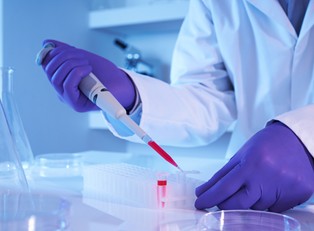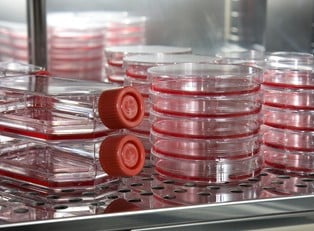The blood found in the placenta and umbilical cord (cord blood) is rich in blood-forming stem cells. These cells are not yet fully developed and have the ability to grow into a variety of cells responsible for sustaining human life. More and more parents are choosing to store or donate cord blood because of this ability.
Cord blood can be used not only for their child, but for other families in medical need. As well, it can assist in cord blood stem cell research. Storing cord blood is a relatively simple process for families, but it may not be the right choice for everyone. Here’s a look at what’s involved, the benefits of cord blood, and potential risks and drawbacks involved.
Understanding Cord Blood Banks
Most cord blood banks require parents to make a decision by the 34th week of gestation. While there is no medical reason for this, most cord blood banks are relatively understaffed. Which type of bank you chose is a final decision, because you cannot have cord blood stored in a private bank sent to a public bank, or vice versa.
Private cord blood banks are designed to accept your child’s cord blood, keep it safely stored in cryogenic conditions, and have it available in the event that your child (or a sibling) requires a procedure involving cord blood stem cells. Unfortunately, these banks can be costly, particularly initially. For this reason, many experts recommend private banking for families with a genetic history of issues that can be treated with cord blood (such as leukemia or sickle cell anemia).
Public cord blood banks are designed to accept cord blood donations. These institutions do not reserve your child’s cord blood for your family, but they do use it for research and studies to create treatments and cures involving cord blood. In some cases, your donation could even be used to save another child’s life. The biggest problem with public donations is availability. Most public banks seek birthing centers in a large area with a diverse population; mailing in samples is not generally an option.
Collecting Cord Blood
Collecting cord blood is quick and painless for mom and baby. The only thing you have to do is sign up and bring any equipment the company sends for collection. After your baby is born, the umbilical cord is clamped and cut normally, as with any pregnancy. Your doctor will insert a needle into the cord near the placenta and extract the blood into a storage bag. The amount collected will vary by pregnancy, but most of the time the total will be between one to five ounces. When the extraction process is complete, your cord blood is sent to a storage facility where it undergoes a separation and cryogenic freezing process to keep it usable over a long period of time.
Benefits of Cord Blood
Because of their indeterminate nature, stem cells contain a host of potential benefits. Additionally, stem cells can act as healthy replacements for blood cells damaged during cancer treatments like chemotherapy or radiation. Stem cells are a positive force for cancers, genetic diseases, degenerative diseases, and genetic diseases. According to ViaCord, more than 80 diseases are currently treatable through cord blood stem cells.
Researchers are also confident cord blood may one day be able to be used for much more. They are perfect research because they grow significantly faster than adult stem cells, and they have never been subject to some of the diseases adult stem cells have. Cord blood stem cells are hematopoietic, which means “blood forming.” Further, cells that come from the umbilical cord and placental tissue are mesenchymal, which seem to be particularly effective for bone and muscle issues and immune diseases.
Drawbacks of Cord Blood
One of the biggest reasons cord blood is not more popular is that most treatments requiring stem cells do not require cells come from the person being treated. For example, treating genetically based cancers with cord blood is not possible, because a person’s stem cells probably carry the same cancerous defects their current cells have.
Secondly, it’s important to weigh the likelihood your child will actually need the cord blood against the financial burden of storing cord blood. For many people, such small odds (1 in 2,700) may not be worth the money it costs to store cord blood in a blood bank. Even if you factor in potentially using stored blood for a sibling or other close relatives, the chances are still a relatively low 25%.
Even if you cannot afford to personally store your child’s cord blood, you can still donate those stem cells to save many lives through research.




